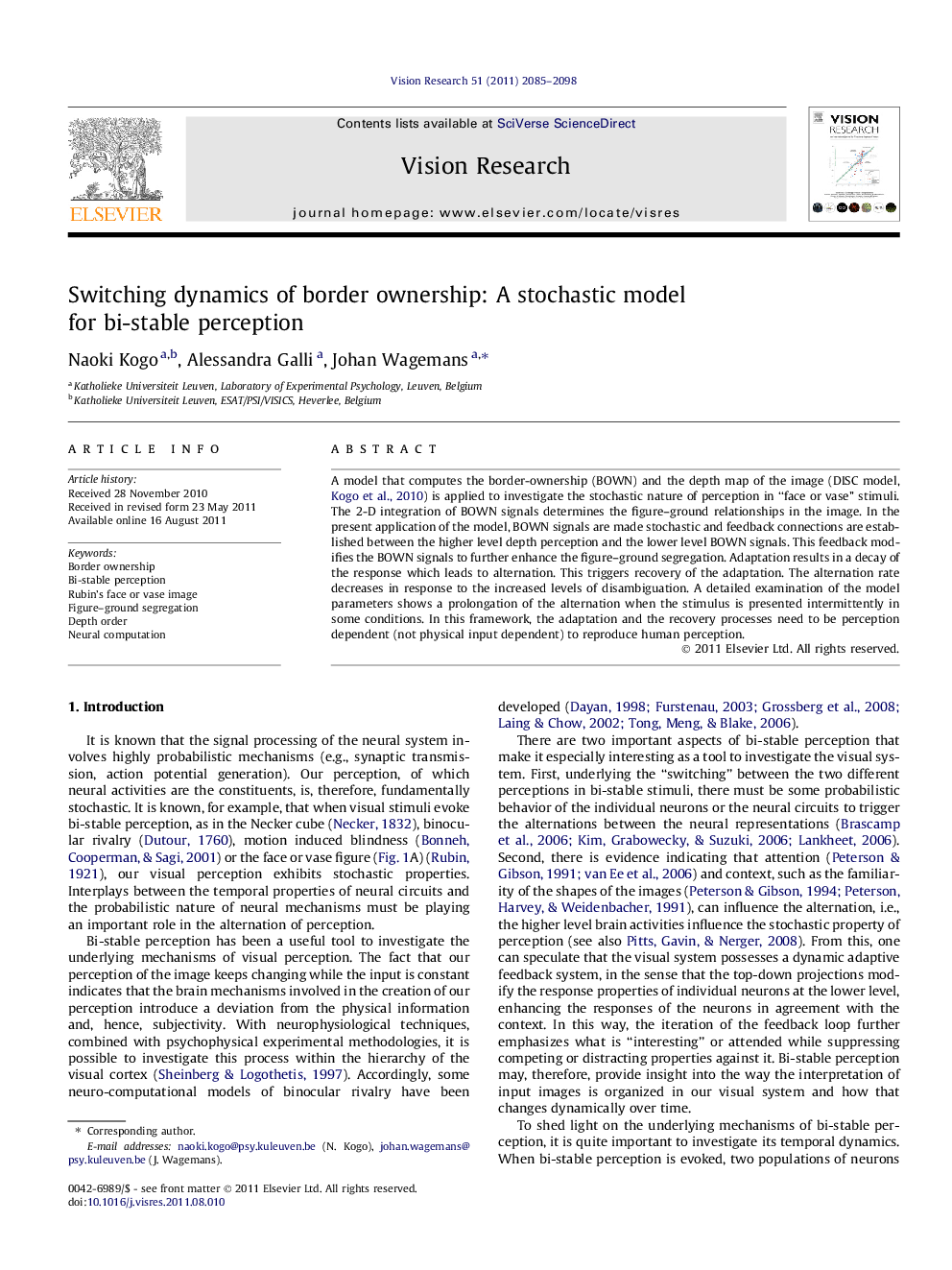| Article ID | Journal | Published Year | Pages | File Type |
|---|---|---|---|---|
| 4034265 | Vision Research | 2011 | 14 Pages |
A model that computes the border-ownership (BOWN) and the depth map of the image (DISC model, Kogo et al., 2010) is applied to investigate the stochastic nature of perception in “face or vase” stimuli. The 2-D integration of BOWN signals determines the figure–ground relationships in the image. In the present application of the model, BOWN signals are made stochastic and feedback connections are established between the higher level depth perception and the lower level BOWN signals. This feedback modifies the BOWN signals to further enhance the figure–ground segregation. Adaptation results in a decay of the response which leads to alternation. This triggers recovery of the adaptation. The alternation rate decreases in response to the increased levels of disambiguation. A detailed examination of the model parameters shows a prolongation of the alternation when the stimulus is presented intermittently in some conditions. In this framework, the adaptation and the recovery processes need to be perception dependent (not physical input dependent) to reproduce human perception.
► Switching of bi-stable perception is explained by stochastic switching of border-ownership. ► Switching dynamics is modeled by adding feedback, adaptation and recovery. ► Adaptation and recovery processes have to be perception-dependent, not stimulus-dependent.
